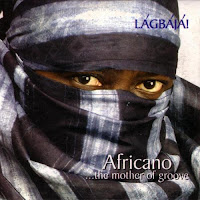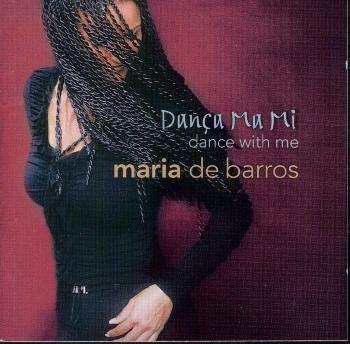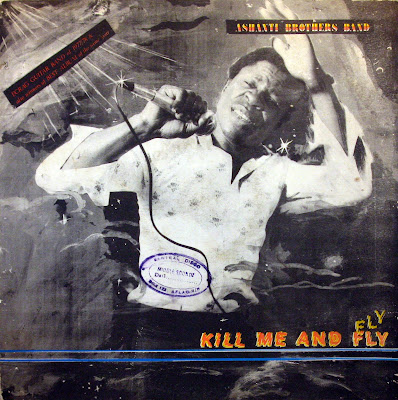-
Par DJDemonAngel le 16 Mai 2010 à 17:30

Note :





http://www.myspace.com/anamourafado
Origine du Groupe : Portugal
Style : World Music
Sortie : 2009
Tracklist :
01 Leva-Me Aos Fados 3:00
02 Como Uma Nuvem No Cu 3:10
03 Por Minha Conta 3:32
04 A Penumbra 2:44
05 Caso Arrumado 2:22
06 Talvez Depois 3:16
07 Rumo Ao Sul 3:51
08 Fado Das Aguas 3:15
09 Fado Vestido De Fado 2:32
10 Critica Da Razao Pura 2:56
11 De Quando Em Vez 4:00
12 Fado Das Mgoas 2:44
13 Aguas Passadas 4:08
14 Que Dizer De Ns 4:42
15 Nao Um Fado Normal 4:23
16 Esta Noite 3:05
17 Na Palma Da Mao 3:17Ana Moura is a Portuguese fado artist who, like her contemporary Raquel Tavares, has collaborated extensively with songwriter and producer Jorge Fernando, producing work shaped equally by pop and fado traditions. (Fernando has released pop records under his own name, but was also a guitarist for fado’s greatest star, Amália Rodrigues.) “Sou do Fado”, a song by Fernando which appears on Moura’s first album, was structurally quite far from fado, yet also insistently laid claim to the genre: “Sou do fado / Sou do fado / Sou fadista” (“I am of / from fado ... I’m a fadista”). Aconteceu (2004), her second album and a double CD, placed songs derived from pop songwriters such as Tozé Brito and writers of fado canção (the more modern refrain-based form of fado) on the first disc and a series of castiço (traditional) fado melodies on the second.
By the time of her third album, Para Além da Saudade (2007), constructed via a similar mixture of traditional and contemporary elements, Moura had perfected a style of singing as clear and direct as another contemporary, Katia Guerreiro, while also developing the look and outlook of a successful pop artist. This combination would earn her acclaim at home (Para Além was a critical and commercial success) and the notice of major international rock and pop stars. Following a concert by Moura at La Cigalle in Paris, it was reported that Prince had flown across the Atlantic in order to see her perform and that the two singers had made plans to record together. It’s unclear whether these plans will come to anything, but an earlier Rolling Stones-related project was released in 2008 (Moura also joined the group onstage in Lisbon to sing “No Expectations”).
Moura’s fourth album, first released in Portugal in late 2009, arrives on the back of a steadily growing fanbase and an increasing international visibility. It shouldn’t disappoint either her existing fans or those open to the twists and turns enacted on tradition by the so-called “new fadistas” of the last decade or so. Fernando is once more at the helm, providing production, guitar, and songwriting skills (more than half of the songs are written or co-written by him). In addition to Fernando, Moura is accompanied by the brilliant Custódio Castelo on guitarra portuguesa and Filipe Larsen on acoustic bass. The high production values evident on previous releases are extended to the production of the CD booklet, which includes (for once, excellent) English and French translations of the Portuguese lyrics.
It’s immediately obvious from the opening title track (translated in the CD booklet as “Take Me to a Fado House”) that the vocal attack and phrasing that Moura showcased so well on Para Além da Saudade has been retained. Backed by Castelo’s subtle interventions on the guitarra, Moura manages to evoke a number of fado’s most important elements: its sense of melancholy, of fatalism, and of itself (in a typically self-referential twist, going to the fado house is offered as the cure to the sense of melancholy being simultaneously hymned by this very fado).
It is tempting to describe the next track, Tozé Brito’s “Como uma Nuvem no Céu” (“Like a Cloud in the Sky”), as a much brighter piece. Certainly it is taken at a faster pace, the guitarra providing the necessary rhythmic constancy for Moura’s voice to skip through. But brightness suggests clarity and there was absolutely nothing unclear about the title track; rather, there is almost breathless optimism here where there was acceptance before. This is a song of love and fidelity; despite what the naysayers claim, these lovers will have the constancy of rivers flowing to the sea: “I, too, run to you / And that will never change”. The verses, in true fado fashion, list the challenges to love like a litany of the doomed, while the chorus offers a joyful renunciation. Personally, this is not what I go to fado for, and I have been rather underwhelmed by the increase in upbeat, clapalong numbers in recent recordings and performances by Mariza, for example. But here, Moura’s voice rescues the song, its grit rising to suggest defiance rather than naïve joy. It works, just.
“Por Minha Conta” (“On My Own”) deploys a strategy Fernando and Moura have used before, opening on a musical setting that suggests affinities with the big pop-influenced ballads of contemporary soul or country music. But the track is almost immediately reterritorialized by the entry of Moura’s voice, verging on dissonance and the minor language of classic fado. The background remains simple, allowing the singer to do the bulk of the work; there is no need for instrumental welling-up or other obvious emotional nudges. What marks a good Moura performance, as evidenced here and on the following track, “A Penumbra”, is the rising of the voice out of what Roland Barthes might call the song’s “studium” (its setting and narrative: what it is about) to emphasize a “punctum” (the point that pierces the listener’s consciousness).
And so it continues, a series of seemingly simple songs made markedly more complex by these outbursts of vocal emotion which, like Barthes’s arrow-like puncta, shoot from the text to pin the listener down with a demand that they hear this singer and the pain that haunts her. Many of these songs are expressions of haunting, listing memories, forgettings, regrets, and the fetishized objects to which memory and regret are fastened, even if these objects are only words. “What I kept are the phrases we exchanged”, sings Moura on “Talvez Depois” (“Perhaps Later”), “My clothes, books: these I left behind / Let them gather dust”.
The ventures into pop-balled territory are not always successful. “Rumo ao Sol” possesses considerable melodic beauty, but it seems an obvious beauty, lacking that extra grit which fado demands. Its sadness seems as gaudy as the joy of the Brizo track, but Moura’s voice does not rescue it this time. There is no depth or deconstruction to her reading of the lyric. Listening, you feel sadder but you don’t feel challenged.
“Fado das Águas” uses the melody by Alfredo Marceneiro made famous by Amália Rodrigues’s “Estranha Forma de Vida”. Because of the centrality of Amália’s song to both her career and twentieth century fado, “Fado das Águas” is already engaging in a considerable amount of cultural work before we even take account of the lyrics used by Moura, which are by Mário Raínho (who has also written for Mariza, among many others). It’s a beautiful piece, the timeless melody meshing wonderfully with lyrics in which the poetics of fado are writ large from the outset: “In the river that flows / Over the riverbed of my voice / There’s a longing that dies”. A fado album would not be complete without at least one mention of the famous Portuguese longing known as saudade. Here, singing is rather marvelously put forward as the magic key that will dispel saudade, a recognition of the sublimatory or cathartic powers of the voice.
Moura sensibly follows this history-referencing number with a melody from the traditonal “fado tree”, with the title “Fado Vestido de Fado” (“Fado Dressed as Fado”). Indeed it is, and this was the right time for Moura to remind us of her ability to play it straight. Another traditional setting is used for the brilliantly titled “Crítica da Razão Pura” (yes, “Critique of Pure Reason”), with a lyric by Nuno Miguel Guedes that asks, “Is it worth knowing / what makes up a passion?” “De Quando em Vez”, featuring another of Raínho’s lyrics, this time set to music by João Maria dos Anjos, provides one of the album’s finest examples of Moura’s timbral control and sense of phrasing, and also some of Castelo’s loveliest guitarra work.
The final track of Leva-me aos Fados signals a departure, as suggested by its title, “Não é um Fado Normal” (there is a version of the album with an additional two tracks on it, which was originally produced for exclusive sale in Fnac stores). Indeed it isn’t a normal fado, having been written by Amélia Muge and featuring the Portuguese folk group Gaiteiros de Lisboa, known for their use of pipes and choral singing. Muge is a Portuguese musician who has been releasing solo records since the start of the 1990s and whose own work is based on an experimental mixture of rural folk, jazz, world music and classical styles. Her “Fado da Procura” was a standout of Moura’s last album. The collaboration is not unlike those found on recent albums by “new fadistas” Mariza, Cristina Branco, Mísia, and Mafalda Arnauth (who has recorded a number of songs written by Muge). Like those projects, the results are likely to be divisive. If the desire is to break down barriers between fado, folk music, and pop (and, in the case of Mísia’s recent work, rock), then it does the trick. For me, the use of polyphonic singing here is more intrusive than in the subtler work of António Zambujo, and I’m not sure the pipe really fits in with the other instrumentation.
Overall, though, this is another excellent showcase for Moura’s art, with at least half of the album’s tracks standing out as classics. It will be exciting to experience what the singer does with these new additions to her repertoire when she takes them on tour. As for the potential Prince collaboration, we will have to see whether fate wishes it to be or not. votre commentaire
votre commentaire
-
Par DJDemonAngel le 15 Mai 2010 à 13:30

Note :





http://www.myspace.com/lagbajatide
Origine du Groupe : Nigeria
Style : World Music , Alternative Fusion , Jazz World , Afrobeat
Sortie : 2005
Tracklist :
1. Drum Affirmation
2. Africalypso
3. Who Man?
4. Mammoney Homs
5. Mammoney
6. Rock Me Gentle
7. Never Far Away
8. Aisan
9. Dream Come True
10. Scream
11. Skentele Skontolo
12. Emi MimoFormidable musicien nigérian, Lagbaja représente avant tout un concept musical et politique ; il n'apparaît que masqué et en Yoruba. "Lagbaja" signifie tout à la fois "personne", "quelqu'un", "qui que ce soit " et "tout le monde". Sorte de soldat inconnu de l'afro-beat, il est la voix des opprimés sans visage particulier, des hommes et des femmes qui forment la masse multicolore du peuple africain.
 votre commentaire
votre commentaire
-
Par DJDemonAngel le 12 Mai 2010 à 13:00

Note :





http://www.myspace.com/carmenconsoli2
Origine du Groupe : Italie
Style : World Music
Sortie : 2009
Tracklist :
1. Mandaci una cartolina [single]
2. Perturbazione atlantica
3. Non molto lontano da qui [single]
4. Mio zio
5. Sud Est
6. Marie ti amiamo (con Franco Battiato)
7. ‘A finestra
8. Col nome giusto
9. Elettra
10. VentunodieciduemilatrentaLa voix de Carmen Consoli, reflet d'un tempérament affirmé, est une des plus troublantes de la jeune génération italienne estampillée chanson pop. De ses faux airs d'Asia dont elle partage les mines boudeuses et les tendances anticonformistes - elle mène sa barque musicale avec aplomb et poigne depuis déjà quinze ans. Flinguante beauté à la texture grave - grain voilé, un tantinet métallisé, pâtiné de teintes inattendues, de cassures fugitives - l'est la voix équilibriste de Carmen. Comme dans un théâtre de burattini, scènes d'opéra et de rue, Carmen incarne ses personnages dans une cuisine personnelle avec une manière pâmante de rouler les 'r'. La gamine impertinente – clin d'oeil à l'un de ses titres - est, depuis très jeune, star en Italie. Habituée du festival de San Remo, couronnée de trois disques de platine. L'aventure - rock dans ses balbutiements - s'ouvre, en 1996, sur Due parole et le tube 'Amore di plastica'. Cyclope records - label de sa ville, Catane - avait flairé le talent et illico presto la met en bacs. Carmen, consciente de sa chance - denrée aussi rare en Trinacria que la pluie et le travail - va bûcher dur - jamais là où on l'attend. Se frottant à la pop, la world music, la bossa nova, la chanson d'auteur, passant indifféremment de l'un à l'autre, dans la stratification réfléchie de sa machine à fustiger et faire réfléchir. Appuyée par des clips aux univers travaillés et des concerts marquants, l'artiste multiplie les invitations et n'oublie pas la fraternité au travers de collaborations innombrables - hormis les nationaux, on notera Salvador, Kidjo, Bregovic - et d'hommages multiples - Gainsbourg, Battiato. Citoyenne du monde, elle chemine sur un sentier cosmopolite fait d'authenticité et d'exigeance, enfile les observations très lucides sur notre monde en des albums variés comme ses racines. Avec une plume à ne pas négliger.
La déterminée demoiselle revient sur les ondes en Octobre 2009 [22 Février 2010 en France] avec son septième effort, Elettra, dont le thème est - on l'aura compris - le complexe d'Electre. Un album sur l'amour, ses facettes ambivalentes - peu reluisantes parfois - ses masques incongrus au travers d' incarnations diverses. Le théâtre du monde lu dans ses fissures et fêlures.Ceci trois ans après le vibrant et organique Eva contro Eva, dans lequel il s'inscrit en droite ligne artistique.
Zoom toute sur ces dix paysages qui louvoient entre confessions, dénonciations et chroniques de vie ordinaire. Fenêtre sur place plutôt que sur cour. Où l'on caquète et médit. Douleur et joie en partage. Selon des couleurs kaléidoscopiques comme les histoires racontées, magnifiées par des arrangements raffinés. Servant des mélodies intemporelles, des descentes dans la chanson traditionnelle populaire, ritournelles aigres-douces, aux nuances cubaines, ballades mélancoliques. De carnets accoustiques 'Perturbazione Atlantico' et 'Sud-Est' en chaloupé 'Non molto lontano da qui' : love song désuète, ganachée de nappes de mandoline, Elettra est un divan musical implacable. 'Elletra è la mia medicina', a d'ailleurs confié la 'cantantessa'* lors des interviews de promotion. Ultime retour sur les blessures sublimées, sur les stigmates au sang caillé qui y délivrent - comme les tomates séchées sur terrasse - des leçons de courage et de dignité. Message au père disparu dans l'émouvant 'Mandaci una cartolina'. Comptine décapante avec 'Mio zio', peinture des abus domestiques étouffés par la bourgeoisie conservatrice, où l'ironie mord tout autant dans le texte que dans la musique faussement enfantine. Soutenue dans son oeuvre de déminage par la profondeur de la basse. Coloriée aux crayons hispaniques sur cordes dissonantes. Current 93 rôde. Sans s'attarder plus que de raison. En témoigne 'Marie ti amiamo', duo avec Franco Battiato, déjà présent sur le Fiore splendente d'Etta Scollo. Solidarité entre voisins oblige. Il faut dire que le Monsieur apprécie les invitations du sexe faible. 'Marie' est hilarant pour qui connait un tant soit peu les us et coutumes de la Sicile! Interprété en français et en italien, ce titre hybride à l'autodérision irrésistible est un 'regalo' pour les polyglottes. 'Al finestra'- sur lequel vous pourrez savourer in fine l'un des plus insolites instruments traditionnels de Sicile, le marranzano - poursuit le métissage déjà bien entamé avec une truculente et enlevée immersion en dialecte catanais sur folklore balkanique. Le coeur en bandouillère, on continue l'exploration de cet Orient-Express sonore avec le langoureux et très beau 'Col nome giusto' tanguant sous les assauts des vagues guimauve et les caresses de regrets du violoncelle. Aussi surprenant que cela puisse paraitre, les deux derniers titres - dont le pourtant intéressant Elettra - sont plutôt décevants. Un peu plats, peut-être.
Bilan : Certains fans regrettent en substance la mediamente isterica, Elettra étant moins seriné de sang frais que prévu mais c'est faire fi des urgences de la Consoli. Très cathartique et toujours aussi honnête artistiquement, l'album conte, panse, console, livre et constate. Ravaleur d'un certain pathos dégoulinant sur la place publique comme les mesquineries, il est, dans sa modeste liturgie païenne, un chaleureux hymne à la vie, à la fragilité et force de l'humain, à porter en soi et contre soi.
Du carmin et grand Consoli qui se maintient!par Elysia votre commentaire
votre commentaire
-
Par DJDemonAngel le 11 Mai 2010 à 18:15

Note :



 ++
++
http://www.myspace.com/mariadebarros
Origine du Groupe : Cap Verde
Style : World Music
Sortie : 2005
Tracklist :
(01) Amor Luz
(02) Oh Menel
(03) Bo Ke Nha Boy
(04) Espaco Infinito
(05) El Tambem J'dame
(06) Caresse Moi
(07) Pazinho Laxa
(08) Um Tem Um Amor
(09) Nos Tradicon
(10) Rosinha
(11) Sol Di Manha
(12) OumaiRévélation du festival 2004, la nièce de Cesoria Evora ensoleille la musique capverdienne par une interprétation sensuelle, fraîche et baignée de soul des morna et coladeira traditionnelles.
Être la filleule de Césaria Evora n’est pas chose évidente. Comment ne pas craindre la comparaison avec la diva aux pieds nus? Pourtant Maria de Barros s’est parfaitement sortie de ce parcours semé d‘embûches. Difficile en effet de faire mieux que sa musique aux rythmes chaloupés, sa voix chaleureuse, le tout dans le respect des morna et coladeira traditionnelles.
Cette chanteuse, née de parents cap-verdiens, chante essentiellement en portugais mais elle parle un français et un anglais impeccables grâce à son histoire faite de migrations. Elle voit le jour au Sénégal et grandit en Mauritanie. Puis, alors qu’elle est encore adolescente, Maria de Barros s’installe avec ses parents à Rhode Island. C’est là-bas, plus qu’en Mauritanie, qu’elle rencontre vraiment les membres de la communauté cap-verdienne. Finalement, elle attend les États-Unis pour se lancer dans la musique de ses racines, pour chanter son pays et sa culture d’origine.
Elle traverse ensuite son pays d’adoption pour s’installer à Los Angeles. Elle y sort son premier album, Nha Mundo, encouragée par Césaria Evora, qui maintient sa présence rassurante. «Elle tenait tellement à ce que je fasse ce premier disque... Elle m’a dit qu’elle ne serait plus ma marraine si je ne le sortais pas. Après tout, si elle m’a elle-même choisie comme filleule, elle peut également me retirer ce titre.» Heureusement, l’héritière a sagement suivi les conseils avisés de sa marraine. Un deuxième album, Dança Ma Mi, ne tarde pas à voir le jour.
En 2009, elle sort son troisième disque, intitulé Morabeza. Il porte les mêmes influences variées, d’Afrique, du Brésil, des Caraïbes, de France, d’Espagne, mêlant ainsi des rythmes reggae, zouk, boléro, sambas, salsa... Sa musique transcende les nationalités et les cultures. Les générations aussi : ses textes sont écrits par des paroliers installés tels que Manuel d'Novas, Betu, Kaka Barbosa, Jorge Barbosa ou Teofilo Chantre, mais également par des talents plus jeunes comme To Alves, Calu di Guida, Joe Andrade, Kalu Monteiro ou Djim Job.
Morabeza signifie «l’âme d’un peuple», une promesse de solidarité lors des périodes difficiles, de gentillesse, de tendresse, d’hospitalité, d’amitié. Une promesse que l’on retrouve à l’état pur dans les chansons de Maria de Barros. votre commentaire
votre commentaire
-
Par DJDemonAngel le 30 Avril 2010 à 11:00

Note :





Origine du Groupe : Ghana
Style : World , Folk
Sortie : 1978
Tracklist :
1 Kill me and fly
2 Onipa retu ne nan
3 Saa na yede beye wo
4 Asem bone se hiani
5 Gyae nkonta buo yi
6 Kusa wo bankye
7 Me wu a mo bebreI was trying to find me some usefull information on this topic, but Ashanti Brothers Band's album 'Kill me and Fly' seemed ( how about this word ) ungoogleable. The leader of the band's called Osei Vasco, and that's really all I know. Being from 1978, I must say, the vinyl is in very good condition and spins beautiful. And then, the music, I have seldom heard such great highlife, I'm very fund of this sound with warm vocal harmony and hammond organ !
THANKS Global Groove http://globalgroovers.blogspot.com
 1 commentaire
1 commentaire Suivre le flux RSS des articles de cette rubrique
Suivre le flux RSS des articles de cette rubrique Suivre le flux RSS des commentaires de cette rubrique
Suivre le flux RSS des commentaires de cette rubrique









